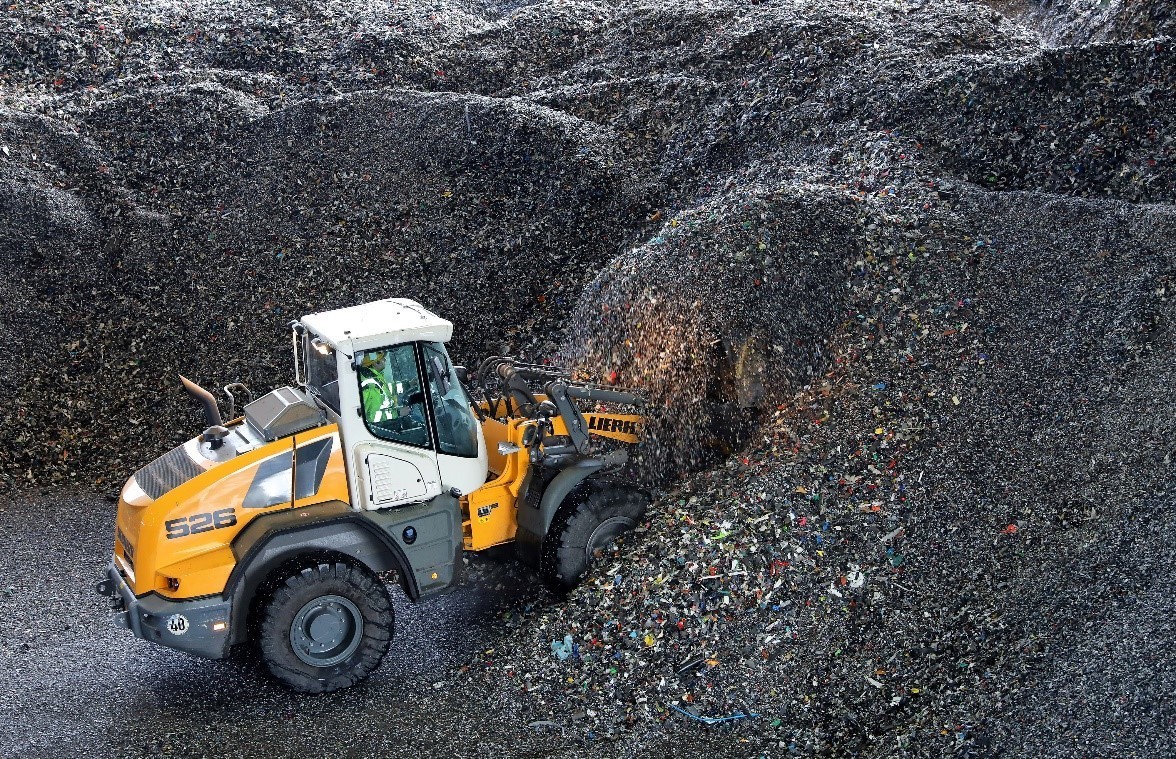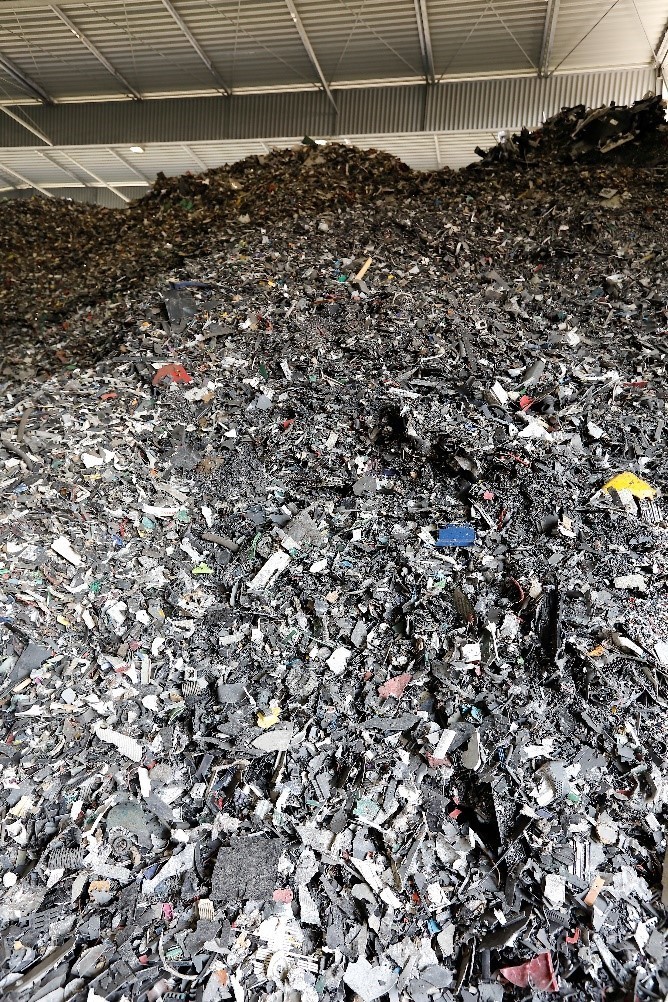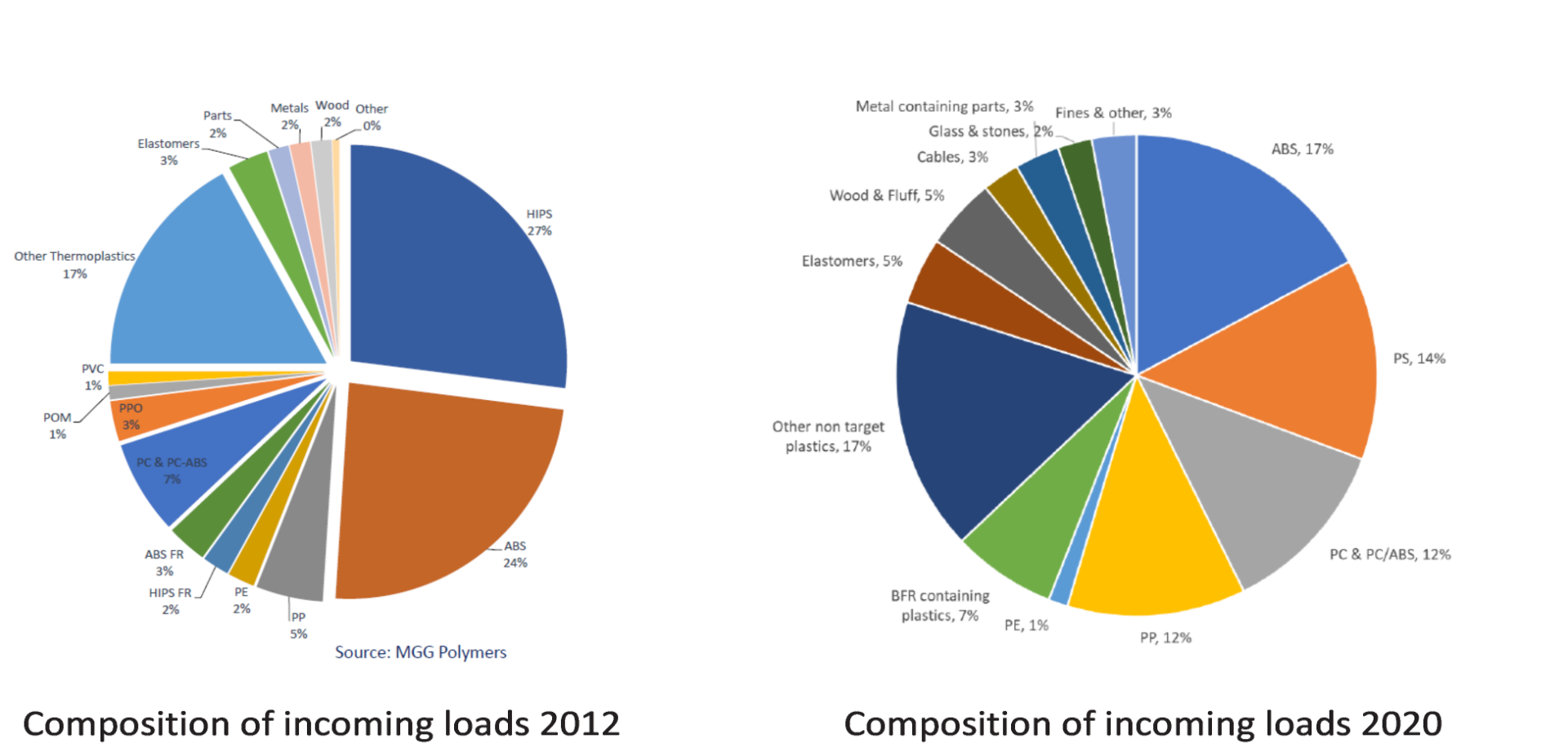Volume and composition of WEEE plastics in Europe
The development of a circular economy is an important goal that the new EU Commission is also focusing on. The focus is particularly on waste streams such as electronic scrap, which have changed over the years.
During the lock-down phase of the Corona crisis, we participated in a whole series of conference calls. Institutions, government agencies, consultants and associations asked us questions about the latest information on the quantities and composition of plastics from waste electrical and electronic equipment (WEEE).
Taking the initiative
As a member of EERA (www.eera-recyclers.com ), MGG Polymers has voluntarily agreed to take the initiative to answer these questions. To compile the necessary information, we have compared two studies that have been conducted in recent years.
One of the studies is from the project CWIT - "Countering WEEE Illegal Trade" (www.cwitproject.eu ). This study was published in 2015.
The second study used was the result of the EU funded project ProSUM - "Prospecting Secondary raw materials in the Urban mine and Mining wastes". (http://prosumproject.eu/sites/default/files/DIGITAL_Final_Report.pdf ). This study dates to 2017 and is linked to the "Urban Mine Platform", which contains many data and forecasts on the quantity and composition of electronic waste.
To be able to evaluate the volume and composition of WEEE plastics in Europe, we have combined the data from the CWIT study with results from our own observations and measurements.
The current situation
Currently, the total demand for plastics in Europe amounts to about 50 million tons per year. The electronics production sector accounts for 6.2% or 3.1 million tonnes of this. The officially collected and recycled quantities of WEEE plastics account for about 700,000 tonnes.
However, we know from the CWIT study that a good proportion of unofficially collected WEEE is recycled in the EU. Combining the two studies, we can assume that the total amount of WEEE plastics in the EU is of the order of 1.4 million tonnes. This means that just over half of the plastics used in new electrical and electronic equipment are becoming recyclable WEEE plastic material.
Based on research and its own observations, EERA assumes that the plastic content of the main categories and the breakdown of the weight of the WEEE categories according to the Urban Mine Platform is as shown in the picture
Strong changes
The composition of WEEE plastics has changed considerably over the last 10 years, as the two graphs above illustrate. The analyses 2012 (for the period 2011) and 2020 (for the period 2019) of the incoming goods of MGG Polymers show a decrease in the PS share. In comparison, the share of PC and PC/ABS and PP within the WEEE plastic material increased. This is largely due to a decrease in the volume of CRT televisions, monitors and desktop PCs and an increase in flat panel displays in combination with modems and set-up boxes.
MGG is working closely with leading companies within the Poly-CE consortium (www.polyce-project.eu ) to close the missing link in the circular economy.
As a result, high quality PCR plastics can be better and more easily used in new and sustainable EEE applications.
In this context, there are already some wonderfully sustainable success stories from world leading companies.





